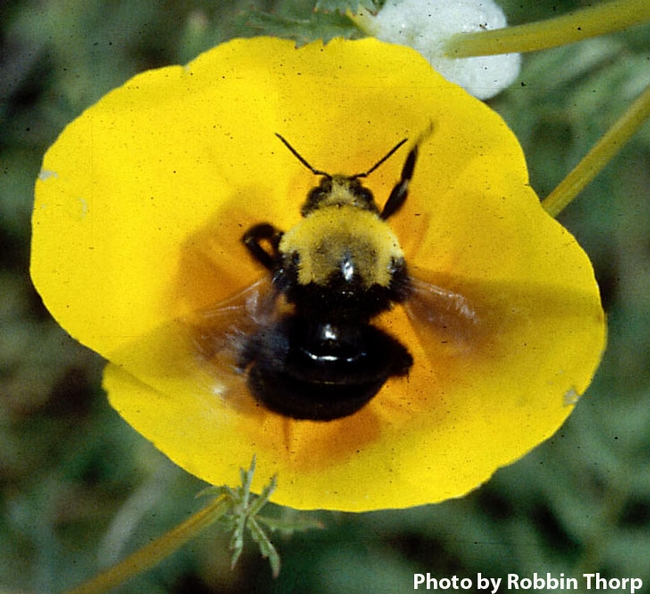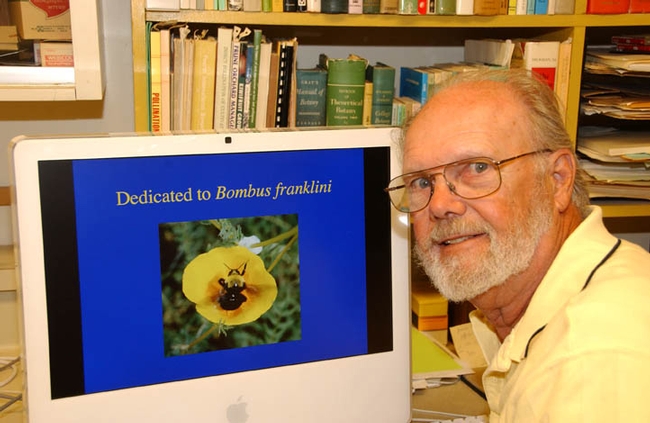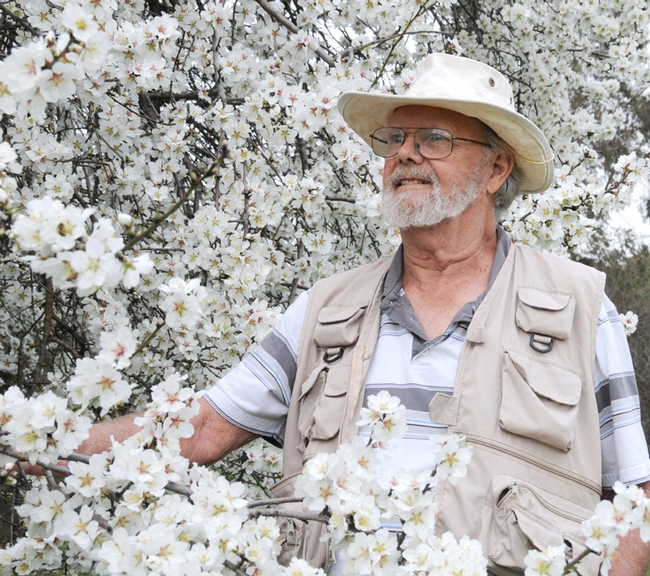
Thorp, a noted bumble bee expert, hasn't seen Franklin's bumble bee for 10 years, but that doesn't mean it's not there--somewhere in its small native range of southern Oregon and northern California.
Thorp, distinguished emeritus professor of entomology, UC Davis Department of Entomology and Nematology, and co-author of Bumble Bees of North America, An Identification Guide, has been chasing Franklin's bumble bee (Bombus franklini) since 1998, the year he began monitoring for the elusive bee.
Last August a documentary crew from CNN chased him--well, sort of. They followed him to a meadow near Mt. Ashland, Oregon, where he last saw the bumble bee on Aug. 9, 2006.
John Sutter, a columnist for CNN Opinion who focuses on climate change and social justice, wrote about Thorp, then 82, in a piece he called "The Old Man and the Bee," a spinoff of Ernest Hemingway's "The Old Man and the Sea."
Sutter said he had no problem identifying Thorp. "White truck, bumble bee stick on tailgate. Yep, that's him."
Thorp also wore a t-shirt with an image of Franklin's bumble bee, a gift from his daughter. It's an image he took.
"That black-and-yellow bee, which looks like so many others except for the characteristic 'U' on is back, is the object of Thorp's obsession," wrote Sutter. "It's a creature he told me flies through his dreams always just out of reach."
No, Thorp and the documentary crew didn't find it that August day. Other bees, but not "that one."
But Thorp will keep looking for Franklin's bumble bee, which is on the Red List of Threatened Species of the International Union for Conservation of Nature and Natural Resources (IUCN). He helped sound the alarm that put it on the Red List.
"Bombus franklini occurs only in the USA," IUCN relates. "It is found only from southern Oregon to northern California between the Coast and Sierra-Cascade Ranges, in Douglas, Jackson and Josephine and Siskiyou and Trinity counties in Oregon and California, respectively. This area is around 190 miles in the north-south direction (40º58' to 43º30'N latitude) and 70 miles from east to west (122º to 124ºW longitude)."
Franklin's bumble bee was named in 1921 for Henry J. Franklin, who monographed the bumble bees of North and South America in 1912-13. During its flight season, from mid-May through September, Franklin's bumble bee frequents California poppies, lupines, vetch, wild roses, blackberries, clover, sweet pea, horsemint and mountain penny royal. It collects pollen primarily from lupines and poppies, and gathers nectar mainly from mints.
We remember a July 2010 interview with Robbin Thorp.
“People often ask the value of Franklin's bumble bee," Thorp told us. "In terms of a direct contribution to the grand scale of human economies, perhaps not much, but no one has measured its contribution in those terms. However, in the grand scheme of our planet and its environmental values, I would say it is priceless.”
“Loss of a species, especially a pollinator, diminishes our global environment,” he said. “Bumble bees provide an important ecological service--pollination. This service is critical to reproduction of a huge diversity of plants that in turn provide shelter, food (seeds, fruits) to diverse wildlife. The potential cascade of effects from the removal of even one localized pollinator may affect us directly and indirectly.”
Meanwhile, Thorp continues to receive photos from folks asking if "this one" is Franklin's bumble bee. Or "that one."
No. Not "this one." Or "that one."
But he appreciates the lookout.
And Robbin Thorp still holds out hope that somewhere in that five-county area of southern Oregon and northern California, Franklin's bumble bee may reappear. Maybe 2017?
After all, it's a brand new year.
Attached Images:

